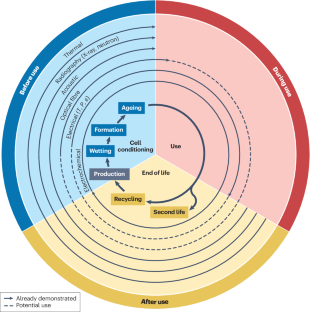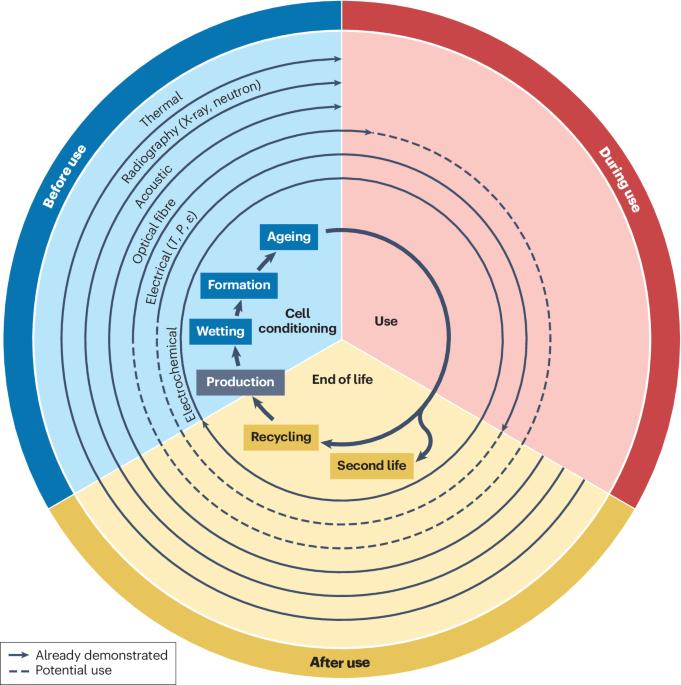Non-destructive characterization techniques for battery performance and life-cycle assessment
引用次数: 0
Abstract
Improving the performance and efficiency of batteries is key to enabling the broader adoption of electric vehicles and the effective use of intermittent renewable energy sources. However, this enhancement demands a more comprehensive understanding and improved surveillance of the essential mechanisms that control battery functionality over their entire lifespan. Unfortunately, from the moment batteries are sealed until their end of life, they remain a ‘black box’, and our knowledge of the health status of a commercial battery is limited to current (I), voltage (V), temperature (T) and impedance (R) measurements, at the cell or even module level during use, leading to an over-reliance on insufficient data to establish conservative safety margins and a systematic under-utilization of cells and batteries. Although the field of operando characterization is not new, the emergence of techniques capable of tracking commercial battery properties under realistic conditions has unlocked a trove of chemical, thermal and mechanical data that have the potential to revolutionize the development and utilization strategies of both new and used lithium-ion devices. In this Review, we examine the latest advances in non-destructive characterization techniques, including electrical sensors, optical fibres, acoustic transducers, X-ray-based imaging and thermal imaging (infrared camera or calorimetry), and their potential to improve our comprehension of degradation mechanisms, reduce time and cost, and enhance battery performance throughout their three main life stages: during the manufacturing process, during their utilization and, finally, at the end of their life. This Review examines the latest advances in non-destructive operando characterization techniques and their potential to improve our comprehension of degradation mechanisms and enhance battery performance during the manufacturing process, utilization and at the end of life.


用于电池性能和生命周期评估的非破坏性表征技术
提高电池的性能和效率是更广泛地采用电动汽车和有效利用间歇性可再生能源的关键。然而,要提高电池的性能和效率,就必须更全面地了解和更好地监控电池在整个生命周期内控制其功能的基本机制。遗憾的是,从电池密封到报废,它们始终是一个 "黑盒子",我们对商用电池健康状况的了解仅限于使用过程中在电池甚至模块层面进行的电流 (I)、电压 (V)、温度 (T) 和阻抗 (R) 测量,这导致我们过度依赖不充分的数据来建立保守的安全系数,电池和电池的利用率系统性地偏低。尽管操作表征领域并不新鲜,但能够在现实条件下跟踪商业电池特性的技术的出现,已经开启了化学、热和机械数据的宝库,有可能彻底改变新型和旧式锂离子设备的开发和利用策略。在本《综述》中,我们将探讨非破坏性表征技术的最新进展,包括电传感器、光纤、声传感器、X 射线成像和热成像(红外热像仪或量热仪),以及这些技术在改善我们对降解机制的理解、减少时间和成本以及提高电池在三个主要生命阶段(制造过程中、使用过程中以及寿命结束时)的性能方面的潜力。
本文章由计算机程序翻译,如有差异,请以英文原文为准。
求助全文
约1分钟内获得全文
求助全文

 求助内容:
求助内容: 应助结果提醒方式:
应助结果提醒方式:


